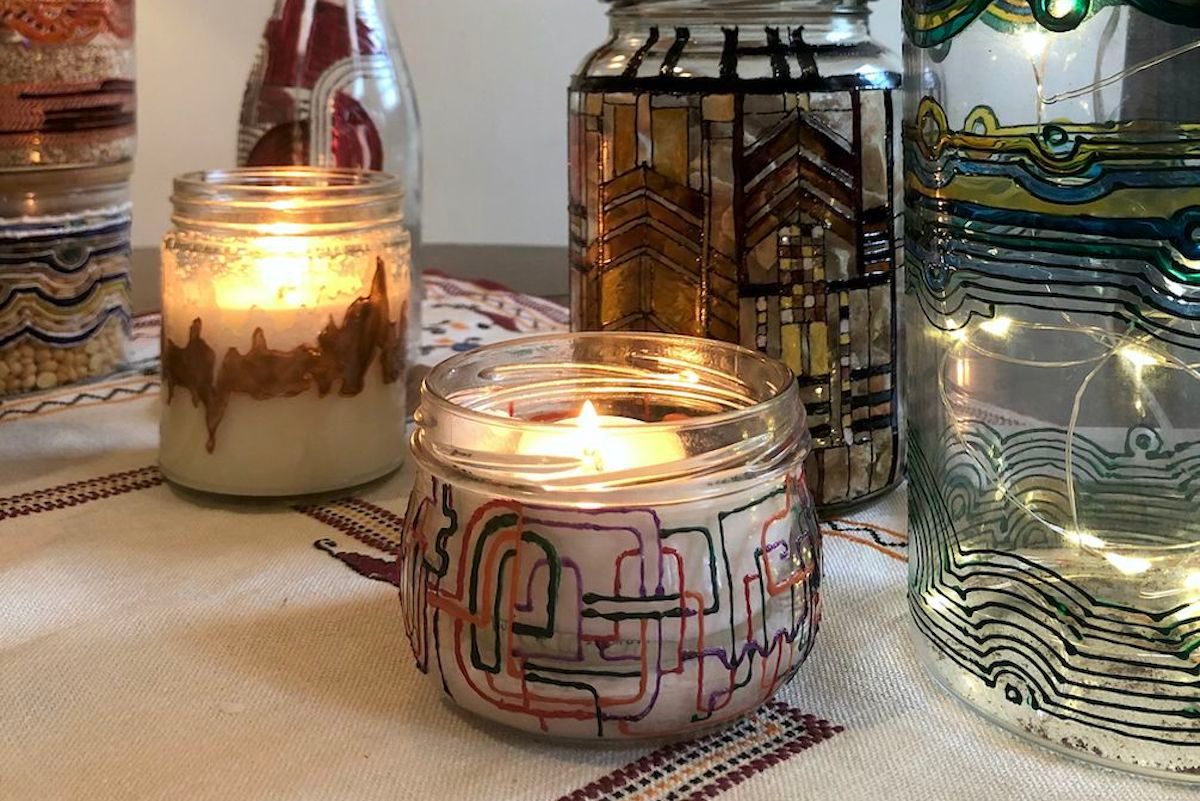An object is often worth more than its material form. It can bring with it cultural echoes, family history, and personal memory. In The Things We Treasure, writers tell us about their most priceless possessions — and the irreplaceable stories behind them.
* * *
2020 was a year of acquired hobbies. We baked sourdough, made puzzles, poured candles, pressed flowers, and knitted sweaters. The bread, we ate, the candles, we burned, the rest, we kept and wove into the fabric of our homes. Like trinkets that remind us of travels past, the objects that kept us busy have become tangible memories of a year past. It is now 2021, and our homes have become museums of our lives on lockdown.
My own museum looks like this: an old pickle jar I painted when hospitals in New York City were imploding. A tiny pesto jar I turned into a candle holder for date nights. An empty can of tomatoes I wrapped in twine and transformed into a plant pot. All of them were born in isolation — my own Corona-babies made of angst, kitchen rejects, and the urge to feel useful when time moved at a glacial pace.
For those of us privileged enough to complain about the sameness of staying at home 24/7, life screeched to a halt sometime last spring. Mondays bled into Sundays and Sundays bled into Mondays. The clocks may well have stopped, and 2020 could've been one draining, drawn-out pause. Except it wasn't, and all I have to do is look around for proof.
I painted my first pandemic jar to the sounds of sirens in the background. Shortly after, my husband and I left New York to hunker down at his parents' house in California. We thought we'd be there for a month or two, so I didn't bring my glass paints. We stayed for five months — enough to buy new paints and start a California COVID collection, but I didn't know then what I know now, so I just watched the world unravel, feeling weak and out of sorts.
Last time I felt this way, it was 2015 and I was living in London. I was stuck in a stagnant relationship, in a stagnant position at work, and in a stagnant year that I now see as a quarter-life crisis. Looking for an escape, I found solace in used glass containers, which, like me, were emptied and ready for change. I started collecting bottles then, upcycling our own wine bottles and rummaging for more exciting shapes in my retail job's recycling bins. By the time I moved out a year later, I had amassed two boxes worth of upcycled bottles and jars. My ex asked to keep one of them, I shipped the rest back home to Bulgaria, and shipped myself to Paris.
A lot has changed since then: I moved three more times, met an American boy, endured three years of long-distance, uprooted myself to New York City, married said American boy, and trained him not to throw away pretty jars. I didn't paint much in those years; collecting objects isn't synonymous with a nomadic life. But when the pandemic set in and doom-scrolling became a routine, I found solace in glass jars again.
I used to paint cityscapes, autumn leaves, and colorful animals. I now revel in abstract, perhaps more meditative patterns. But it doesn't matter what I paint, because this isn't about that. It's about doing, instead of consuming. Breathing life into something past its prime and giving it a renewed sense of purpose when my own has been diluted. It's a form of self-care l have learned to seek out, like a ritual that refills my body when it is too empty to feel.
Many of us have learned to build our own self-care rituals. After a years-long hiatus, my grandma rediscovered knitting. "It keeps me from just staring," she told me. My sister-in-law started playing tennis every day, and my best friend took on sewing. She hadn't thought much of it until I asked how it makes her feel. "It gives me a small sense of pride at a time when life has lost some of its meaning," she said.
The last year has been such a whirlwind that many of us haven't had time to put labels on the things we do and how they make us feel. Until the start of the pandemic, I thought of upcycling as a fun hobby that also happened to be sustainable. I now know that this hobby is self-care in its purest form. And because I know that to be true, the effects of it feel stronger. It may be a trick of the mind, a placebo of sorts, but if it works, does it really matter?
In the face of trauma, it can be hard to seek out the good over the bad. But as winter peaks, I'm learning to make healthy decisions for myself. It doesn't always work, and I often find myself sinking into the couch, scrolling through the social-media veneer of people doing fun, perhaps unsafe, things while I mope around. But when I'm done moping around, I pull out my paints and sit on the carpet, ready to breathe life into a new glass jar — and into myself.
Related reading:




Shares